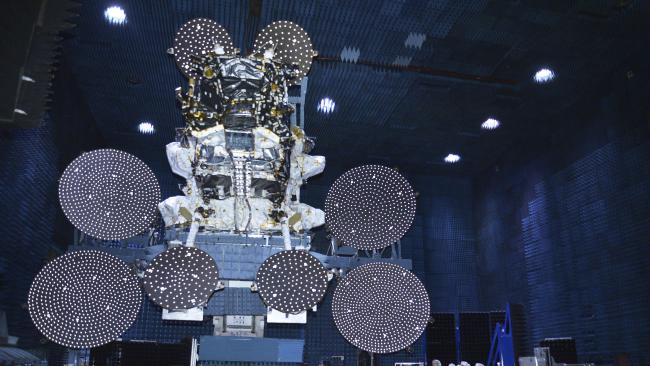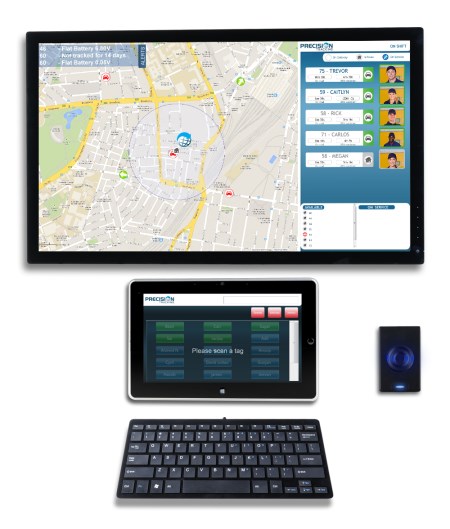NBN Co recently released its latest 3-year rollout plan, in which 3 million households would get broadband Internet via Hybrid Fibre-Coaxial (HFC) networks, which were originally designed for broadcasting cable TV.
This marked a drastic change to the previous plan, under which the vast majority of Australians would have had Fibre-to-the-Premises connectivity.
Newly-appointed Communications Minister, Senator Mitch Fifield, lauded this as a policy triumph on his Facebook page.
Remote Laboratory’s Director of R&D, Vladimir Lasky, wrote the following response:
Senator Fifield,
Your government’s broadband policy is based on Voodoo economics.
- Your government is spending billions to purchase the existing HFC networks from Telstra and Optus
- Your government will spend billions to extend and upgrade the HFC networks to reach subscribers in the designated areas
- Your government will spend billions in regular outgoing expenses to maintain the coaxial cable and all the other powered equipment in the communications path
It will all have to be chucked out and replaced within 10-20 years. Why?
The coaxial cable, which is made of metal, will become the speed bottleneck due to its intrinsic physical limitations – namely, the limited frequency bandwidth and the fact that the connections are shared.
None of these problems exist with Fibre.
- There is no expensive, powered equipment in the communications path – just a passive beam splitter – a low maintenance device needing no electricity
- Fibre optic cable is not metallic so it can’t corrode or short, making it cheaper to maintain
- Fibre optic cable has a maximum bandwidth so incredible large, it will never be a bottleneck – increasing the top speed of a connection is just a matter of replacing the laser at each end of the link – there is no need to dig up and/or re-lay or replace cables.
- The expected lifetime of fibre optic cable is 60 years
Can you now understand why it is more economical to spend more money now on fibre so that subscribers and taxpayers will spend far, far less later?
Tagged as:
NBN

NBN Co’s Sky Muster Satellite successfully entered geostationary orbit above Australia earlier today.
We at Remote Laboratory are generally not fans of Geosynchronous Satellite Internet technology for the following reasons:
- Satellites have a fixed maximum upload and download bandwidth which must be shared amongst all users.
- Satellites have a limited lifespan (often 10 years) before they need to be replaced.
- They are susceptible to damage by space junk and high-energy particles released during geomagnetic storms. If this new satellite is damaged, then all users will lose their connectivity.
- Due to the altitude of the Geosynchronous orbit, each user’s connection have a high round-trip latency of over 1000ms, making it unsuitable for many real-time and interactive Internet applications.
We believe that the future of satellite Internet lies in global systems that use large numbers of small satellites in Low Earth Orbit (LEO) like the Canadian CommStellation project due to be launched in 2018. This is because:
- The lower altitude substantially reduces the connection latency. In the case of CommStellation, latencies as low as 7ms are expected.
- The lower altitude also means that users do not need to install satellite dishes
- The large number of satellites reduces the impact of a single-satellite failure
- The satellites are cheaper to build and launch, so upgrades are easier to deploy.
Nonetheless, we welcome the successful launch of Sky Muster as it is one of the few NBN outcomes that has been delivered, and it will improve the quality of Internet connectivity to those in regional Australia and Australia’s external territories – the existing Satellite Internet offering in Australia is highly oversubscribed. During peak periods, speeds have been reported to be lower than those achievable with the dial-up PSTN modems of yesteryear.
NBN Co estimates that 400,000 premises will be able to access the Internet through this satellite, which they state will be fully operational from mid-2016.
NBN Co have “promised” download speeds of 25Mbps and uploads speeds of 5Mbps, which would be comparable to today’s standard ADSL2+ connections.
Naturally, we believe that even with this new satellite, there will only be temporary relief from congestion. As take-up increases, the limited bandwidth will be shared amongst more and more users and will drop far below these speeds. Over the period of the Sky Muster satellite’s lifespan, Internet applications will only become more bandwidth intensive.
Perhaps the alternative global LEO-based systems like CommStellation will be online by then?
Tagged as:
NBN,
satellite

Yesterday, Domino’s Pizza Enterprises (ASX:DMP) announced their introduction of real-time GPS Driver Tracking for pizza deliveries, that lets customers “watch their driver on route to their door in real time and know exactly who their driver is by name”.
Their ASX share price skyrocketed by 8.72% increasing their market capitalisation by $280 million.
Domino’s CEO Don Meij stated “We trialled the tracker technology in 50 Domino’s stores across Australia, in some stores for up to 18 months before launch and we watched the number of driver incidents reduce by 50%”.
But Mr Meij did not mention the name of the technology that the 50 stores trialled, or who created it.
That technology was “Delivery Command”, created by Precision Tracking – a small Sydney-based IT company who build GPS tracking, Fleet Management, M2M communication and IoT solutions.
In late 2014 following the successful trial of Delivery Command, Domino’s chose to create its own very similar-looking tracking solution and use that instead.
More Information:
Disclosure: Vladimir Lasky, our Director of R&D, is also the R&D Manager and a part-owner of Precision Tracking. He was a co-developer of Delivery Command.
Tagged as:
GPS

Last Tuesday 26th November, the NBN Day of Action was held across the nation. Supporters delivered the 270,000-strong change.org petition in favour of a Fibre-to-the-Premises NBN to Members of Parliament in every Federal Seat.
Our Director of R&D, Vladimir Lasky, participated in the campaign by delivering the petition to the Edgecliff office of Communications Minister Malcolm Turnbull, Liberal Party Member of Parliament in the Australian Federal seat of Wentworth.
The delivery was attended by a crowd of 20 supporters, to which Vladimir gave a speech warning that the Coalition government was on the verge of deploying a “Red Rattler” NBN based on the inferior Fibre-to-the-Node architecture, and that Australia does indeed require the NBN to be built using a “Rolls-Royce” Fibre-to-the-Premises architecture in order to achieve the performance and reliability required for such a crucial part of our national infrastructure.
IT News has published a video excerpt from Vladimir’s speech:
httpv://www.youtube.com/watch?v=xfEgKkCPx1o
Here are links to some of the media coverage of the NBN Day of Action event:
- IT News – “FTTP NBN supporters lobby Turnbull”
- Delimiter2: “When Will Labor Get Serious About Supporting its NBN Policy?”. (Note: Premium article – only partially displayed)
- Sydney Morning Herald: “NBN petitioners target Turnbull, MPs”
Tagged as:
NBN


